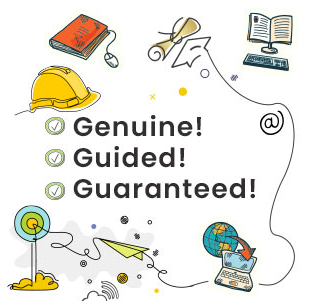Introduction:
Toolbox Talks on ere workers skipped PPE because they were “just doing a quick job” — and the result was costly, both in terms of human health and lost productivity.
This toolbox talks provides a clear guide on PPE safety, covering its importance, types, proper maintenance
What is the use of PPE toolbox talks & how to conduct it effectively?
“Toolbox Talk (TBT)”, a short pre-shift safety meeting help teams to understand site-specific hazards, reinforce safe practices, and stay alert before starting work. Toolbox Talks about PPE ensure that workers understand why PPE is necessary, how to use it correctly, and the consequences of neglecting it, leading to a safer and more compliant workplace.
Example: Personal Protective Equipment toolbox talks on Construction Site
“Good morning team! Today we’re going to talk about something simple but critical — Personal Protective Equipment, or PPE.
What is PPE & Why it is important?
PPE (personal protective equipment) means all equipment that is worn to protect the wearer against risk to health and safety. It covers specific parts of the body depending on the hazard. Without the proper PPE, the likelihood of injuries, both minor and serious, increases exponentially.
PPE shields against physical, chemical, and environmental risks.
Using PPE is not only a legal requirement but also helps you avoid penalties.
Wearing PPE properly allows you to work safely and confidently.
It reduces the risk of injury and keeping you healthy and productive on the job.
The Right Way to Use PPE:
Understand the risks present and why PPE is needed.
Know how the equipment works, its limits, and how to use it safely.
Learn how to put on, adjust, and remove PPE properly.
Check for any testing or inspection requirements before use.
Perform basic maintenance like cleaning and hygiene.
Be aware of factors affecting performance—working conditions, damage, or defects.
Report any defective or worn-out PPE immediately.
Know where to get replacements.
Common Mistakes to Avoid:
Don’t use PPE that is not suitable for the task.
Don’t skip PPE, even for short or “quick” tasks.
Don’t modify or tamper with PPE.
Don’t use damaged, worn-out, or expired equipment.
Don’t share PPE without proper cleaning and sanitation.
PPE Protection Types – Keeping You Safe at Work
PPE is your last line of defence against workplace hazards. Each type of PPE Protection is designed to protect specific parts of the body, and using the appropriate equipment correctly significantly reduces the risk of injury.”
1. Head Protection – Helmets prevent injuries from falling objects or bumps. Inspect for cracks and ensure the chin strap is fastened.
2. Hand Protection & Injury Prevention – Gloves must match the task. Check for wear or tears and replace damaged ones.
3. Eye & Face Protection – Goggles or face shields keep out dust, sparks, and splashes. Keep them clean and replace them if they get scratched or damaged.
4. Foot & Leg Protection – Steel-toe boots guard against crushing injuries and slips. Make sure soles and laces are in good shape.
5. Ear Protection – Earplugs or earmuffs prevent long-term hearing damage. Ensure a proper fit and maintain cleanliness.
6. Respiratory Protection – Masks and respirators shield lungs from dust, fumes, and chemicals. Check seals and replace filters as needed.
7. High-Visibility & Body Protection – Vests improve visibility; harnesses prevent falls. Inspect and store correctly after use.
PPE Maintenance
Inspect regularly for cracks, wear, or damage before each use.
Clean properly following the manufacturer’s instructions.
Replace on time according to recommended shelf life or if damaged.
Repair carefully — simple fixes can be done by users; complex repairs should be done by a competent person.
Follow manufacturer guidelines for testing and maintenance schedules.
PPE Storage:
Store PPE in a clean, dry, and cool place away from sunlight and chemicals
Avoid compressing or bending helmets, goggles, or masks
Keep PPE organized by type for easy access and to prevent contamination
Label personal PPE to prevent mix-ups
“Remember, PPE only works when it’s worn correctly, checked often, and kept in good condition. A small step that can prevent major injuries. Before we wrap up, inspect your PPE now. If anything is damaged or worn, report it immediately.
Common Mistakes to Avoid:
Don’t use PPE that is not suitable for the task.
Don’t skip PPE, even for short or “quick” tasks.
Don’t modify or tamper with PPE.
Don’t use damaged, worn-out, or expired equipment.
Don’t share PPE without proper cleaning and sanitation.
Final Note: PPE Transforms your Workplace Safety
Consistent attention to PPE transforms safety from a rule into a habit. In this blog I highlighted how Toolbox Talks directly improve workplace safety. By covering PPE types, correct use, upkeep, and storage, they help turn safety knowledge into practical actions, lowering risks and building a culture of protection on every site.
For more PPE TBT (Toolbox Talk) topics, Check out the following link
Toolbox Talks on Head Protection
Toolbox Talks on Hand Protection
Toolbox Talks on Eye and Face Protection
Toolbox Talks on Ear and Respiratory protection( new Blog)
Toolbox Talks on Foot and full body Protection(new Blog)
For any questions or guidance regarding workplace PPE safety training, please contact our team…!! Stay vigilant, stay safe!”
– Mr. Varun Vignesh, HSE Expert, Green World Group
















